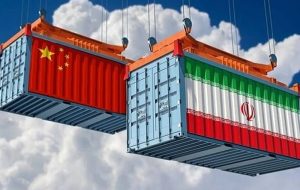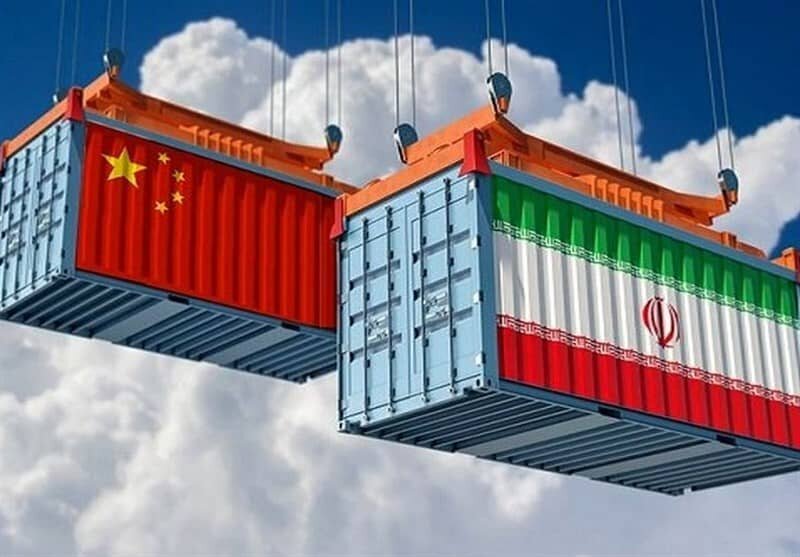Iran’s TPO head to visit China International Import Exhibition
TEHRAN- Iran’s Trade Promotion Organization (TPO) Head Mohammad-Ali Dehghan Dehnavi left Tehran for Shanghai to visit the China International Import Exhibition (CIIE). The TPO head will visit the CIIE at the invitation of the minister of Commerce of China, and in order to examine the capacities and opportunities of trade and investment with China, the


TEHRAN- Iran’s Trade Promotion Organization (TPO) Head Mohammad-Ali Dehghan Dehnavi left Tehran for Shanghai to visit the China International Import Exhibition (CIIE).
The TPO head will visit the CIIE at the invitation of the minister of Commerce of China, and in order to examine the capacities and opportunities of trade and investment with China, the TPO portal reported on Monday.
During the visit of Dehghan Dehnav to this exhibition, the country’s needs in various sectors as well as the export potential of Iranian companies will be evaluated in order to develop exports.
Also, during this visit, in interaction with Chinese officials and companies, the existing obstacles in the path of Iranian companies’ exports to this country will be examined and consultations will be held to resolve them.
The 7th China International Import Expo (CIIE), will be held in Shanghai from November 5 to 10, with the participation of many countries including Iran.
This edition of the CIIE is expected to attracted participants from 152 countries, regions and international organizations, and is set to achieve a new record with 297 Fortune Global 500 companies and industry leaders attending.
The China International Import Expo, the world’s first national-level import-themed expo, is about to be held for the seventh consecutive year in Shanghai, with overseas enterprises gathering to take the pulse of the Chinese market, the China Daily reported.
The previous six editions saw nearly 2,500 new products, technologies and services make their debuts, with combined intended turnover reaching over $420 billion.
The CIIE serves to showcase China’s major opening-up measures and confidence, and to share China’s new development opportunities with other countries. It has become a platform for high-level opening up and a public good for the whole world.
China has continued to roll out policies to spur foreign trade growth and attract foreign investment, cultivating new international competitive advantages and achieving mutual benefits with other countries.
On October 25, the country issued a guideline to promote the experience in aligning some eligible free trade zones and the Hainan Free Trade Port with high-standard international economic and trade rules.
The eligible FTZs are in Shanghai, Guangdong, Tianjin, Fujian and Beijing. The pilot measures, which will be replicated in other FTZs or even nationwide, cover six aspects: trade in goods, trade in services, digital trade, personnel entry, business environment, and risk prevention and control.
China has built 22 pilot FTZs, covering coastal, inland and border areas, contributing about 20 percent of the country’s total foreign investment and import-export volume. Foreign trade of the FTZs expanded by 11.99 percent year on year in the first three quarters of 2024.
Continuous efforts have been made to lower tariffs. In September, China announced it would give all the least developed countries having diplomatic relations with the country zero-tariff treatment for 100 percent tariff lines starting from December 1 this year.
China also keeps rolling out policies to nurture fertile ground for foreign investors. The new edition of the national negative list for foreign investment took effect on Friday, scrapping the two remaining items in the manufacturing industry on the previous list.
The items on the latest negative list, specifying fields off-limits to foreign investors, have been further slashed to 29.
This fully demonstrates China’s active willingness to expand mutual benefits and a clear attitude to supporting economic globalization, said Jin Xiandong, an official with the National Development and Reform Commission, adding that further efforts will be made to improve the level of foreign investment liberalization and facilitation, and to optimize service for foreign-invested enterprises.
Besides the manufacturing sector, China is also pushing forward broader and deeper opening up in the service sector.
China announced in September that it would allow the establishment of wholly foreign-owned hospitals in certain cities and regions, including Beijing, Tianjin, Shanghai, Nanjing, Suzhou, Fuzhou, Guangzhou, Shenzhen and throughout the island of Hainan.
In October, the country decided to allow foreign investors to operate wholly-owned businesses such as internet data centers and engage in online data processing and transaction processing in certain areas as part of a pilot program to expand opening up in value-added telecom services.
A total of 42,108 new foreign-invested firms were established across China in the first nine months of 2024, up 11.4 percent year on year. Notably, foreign direct investment inflows into medical equipment and instrument manufacturing surged 57.3 percent, while inflows into computer and office device manufacturing grew by 29.2 percent during this period.
Opening up to the outside world is not just a matter of “opening the door,” but, more importantly, is actively aligning with international economic and trade regulations as well as other high-standard rules, said Zhang Bin, deputy director of the Institute of World Economics and Politics at the Chinese Academy of Social Sciences.
Zhang underlined the need to enhance synergy between the domestic and international markets as well as resources to constantly cultivate and consolidate new advantages in international economic cooperation and competition.
During a meeting between Chinese Ambassador to Iran Cong Peiwu and Dehghan Dehnavi on October 28, the Chinese envoy emphasized that his country is willing to strengthen trade ties with Iran in all fields.
The ambassador emphasized the importance of enhancing trade cooperation between Iran and China.
He highlighted the necessity of developing trade relations across all economic sectors and expressed China’s willingness to strengthen trade exchanges with Iran in every field.
Dehghan Dehnavi, for his part, emphasized that trade cooperation between Iran and China is at its highest level, adding that the Trade Promotion Organization of Iran is keen to enhance and grow constructive trade relations between the two countries.
Additionally, he highlighted that Iran’s membership in regional agreements like BRICS and the Shanghai Cooperation Organization will facilitate trade cooperation.
Dehnavi also underscored the importance of developing bilateral ties through international exhibitions, technology transfer, and commercial advancements in the industrial and mining sectors.
It is worth mentioning that Mohammad Aghajanlou, the head of the Iranian Mines and Mining Industries Development and Renovation Organization (IMIDRO), was also present at the meeting and shared his insights on developing joint cooperation between Iran and China in the mining and mineral industries.
He emphasized the importance of transferring modern technologies from China to Iran, noting that this updated knowledge would enhance productivity in mining and enable the processing of mineral products with higher added value.
Moreover, he pointed out that sharing knowledge and experiences between mining experts and engineers from both countries could help improve skills and standards in the industry.
MA
